Choosing the Best E-commerce Platform for your Online Store: A Comparison of Shopify, Magento/Adobe Commerce and WooCommerce
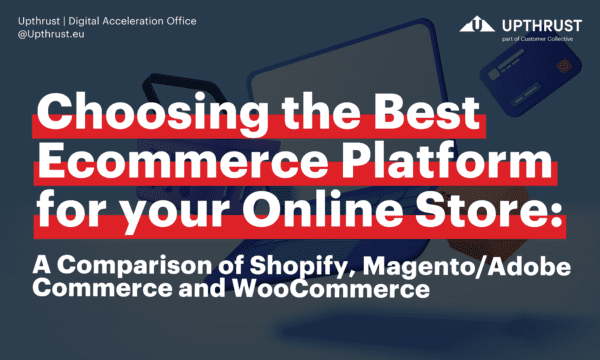
Introduction
E-commerce has revolutionized the way businesses operate, offering endless opportunities for growth and success in the digital marketplace. However, with so many options available, selecting the right e-commerce platform can be a daunting task for businesses of all sizes. From start-ups to established companies, the choice of the best e-commerce platform is critical for launching an online store, driving online sales, and gaining a competitive edge in the digital space.
In this blog post, we’ll explore three of the most widely used and popular e-commerce platforms: Shopify, Magento/Adobe Commerce, and WooCommerce. We’ll dive deep into their differences, weigh their pros and cons, and provide actionable insights to help you make an informed decision. We’ll also highlight the distinct features and capabilities of each of these top-tier e-commerce solutions, and how they can be leveraged to maximize online sales and elevate your e-commerce business.
Whether you’re a small business owner looking to make a splash in the top online marketplaces, an experienced marketer seeking to enhance your e-commerce business, or an entrepreneur considering an e-commerce startup, this guide is for you. We’ll provide you with the knowledge and tools you need to select the right e-commerce platform for your specific needs and goals, setting you up for online success in the ever-evolving digital landscape.
Understanding E-commerce and online sales
Before we dive into the specifics of each platform, let’s take a moment to understand what e-commerce is and why it’s so important in today’s business landscape. E-commerce, or electronic commerce, refers to the buying and selling of goods or services online. It involves online business transactions that are conducted online, making products and services accessible to consumers worldwide.
E-commerce businesses vary widely, from small online stores peddling handmade crafts to large-scale retail operations like Amazon. Many companies also take advantage of existing marketplaces such as Amazon and bol.com to reach a broader audience. Regardless of the scale or platform, all e-commerce businesses aim to reach consumers wherever they are and offer a seamless online shopping experience. This involves not just selling products or services online, but also managing the supply chain, handling customer service, and dealing with various other operational aspects.
In the digital era, e-commerce is not just a business model; it’s a vital part of the global economy. It’s revolutionizing the way businesses operate and consumers shop. If you’re not part of this digital transformation, you’re missing out on a wealth of opportunities. The impact of e-commerce is only set to grow in the coming years, making it an essential consideration for any business.

The Rise of E-commerce
The growth of e-commerce has been nothing short of explosive. With the advent of digital and mobile commerce everywhere, businesses can now reach a global audience, and consumers can shop online from the comfort of their homes. This has led to a seismic shift in the retail landscape, with traditional brick-and-mortar stores increasingly making way for online stores.
In key countries like Belgium, the Netherlands, and Germany, e-commerce has seen significant growth. For instance, in 2021, the e-commerce market in Germany was worth €96.3 billion, a growth of 15.5% compared to the previous year. In the Netherlands, online sales increased by 10% in the same year, while in Belgium, the e-commerce sector grew by 7.8%.
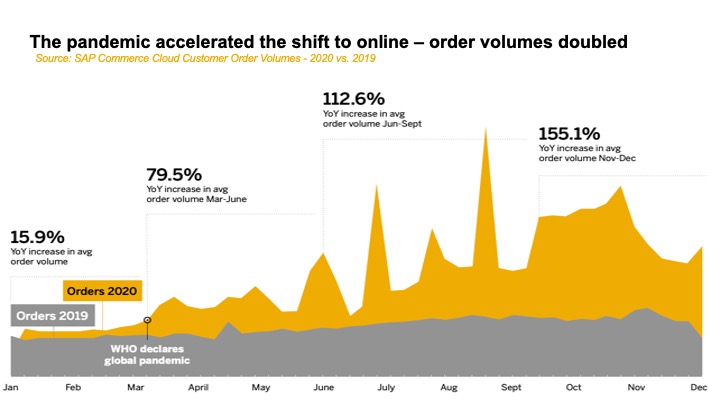
Source: The Future Of E-commerce
The rise of e-commerce has also led to the development of various e-commerce platforms, each offering unique features and capabilities. These platforms serve as the backbone of an e-commerce business, providing the necessary tools to manage online sales, inventory, and customer relationships. They also offer a host of other features, such as marketing tools, analytics, and integrations with other software, to help businesses run their e-commerce websites and online operations more efficiently and effectively.
This growth is not limited to B2C (business-to-consumer) companies. B2B (business-to-business) e-commerce is also on the rise, with more businesses selling directly to other businesses online. Additionally, the Direct-to-Consumer (D2C) model, a point of sale where businesses sell directly to the end customer, is gaining popularity.
The rise of e-commerce has led to the development of various e-commerce platforms, each offering unique features and capabilities. These various e-commerce platforms serve as the backbone of an e-commerce business, providing the necessary tools to manage online sales, inventory, and customer relationships.
Choosing the Right E-commerce Platform
Choosing the right e-commerce platform for your business is a critical decision that can shape the trajectory of your online success. The platform you choose will determine the functionality of your online store, the experience you provide your customers, and ultimately, the success of your online sales.
When evaluating e-commerce platforms, there are several factors to consider. These include ease of use, scalability, security, cost, and the specific needs of your business. For instance, a B2B (business-to-business) company may have different requirements than a B2C (business-to-consumer) company. Similarly, a small business may have different needs and constraints than a large enterprise.
When it comes to evaluating e-commerce platforms, there are several factors that businesses need to consider. One of the most critical factors is ease of use, especially for small businesses and startups that may not have a dedicated IT team. In fact, a recent study found that 93% of small businesses value ease of use as a key factor when choosing an e-commerce platform.
Scalability is another important consideration, as businesses need a platform that can grow with them. Magento/Adobe Commerce, for instance, is known for its scalability and can handle high volumes of traffic and sales. In fact, Magento/Adobe Commerce powers over 12% of all e-commerce sites, including some of the largest online retailers in the world.
Security is also a paramount concern in the world of e-commerce. Cyber threats are on the rise, and businesses need to choose a platform that offers robust security features to protect their data and their customers’ information. Shopify, for example, has a dedicated security team that monitors and protects its platform 24/7.
Cost is another key factor that businesses need to consider. E-commerce platforms come with various costs, including subscription fees, transaction fees, and costs for additional features and services. According to a recent survey, 58% of businesses consider cost to be a primary factor when choosing an e-commerce platform.
The specific needs of the business should guide their choice of an e-commerce platform. For instance, if the business is planning to sell a large number of products, they may need a platform that offers robust inventory management features. If they’re targeting a global audience, they may need a platform that supports multiple languages and currencies. WooCommerce, for example, offers more than 140 payment gateways and supports over 100 currencies.
Integration possibilities and costs with ERP/CRM/PIM systems are also crucial considerations. The right e-commerce platform should be able to integrate seamlessly with the business’s existing systems, allowing for efficient data exchange and streamlined operations. Magento/Adobe Commerce, for example, has a powerful API that allows for easy integrations with a wide range of third-party systems, including ERPs, CRMs, and PIMs.
By taking these factors into account, businesses can choose an e-commerce platform that aligns with their specific needs and goals. This can help set them up for online success and growth in the ever-expanding e-commerce landscape.
Shopify: A User-friendly Online Shopping Solution
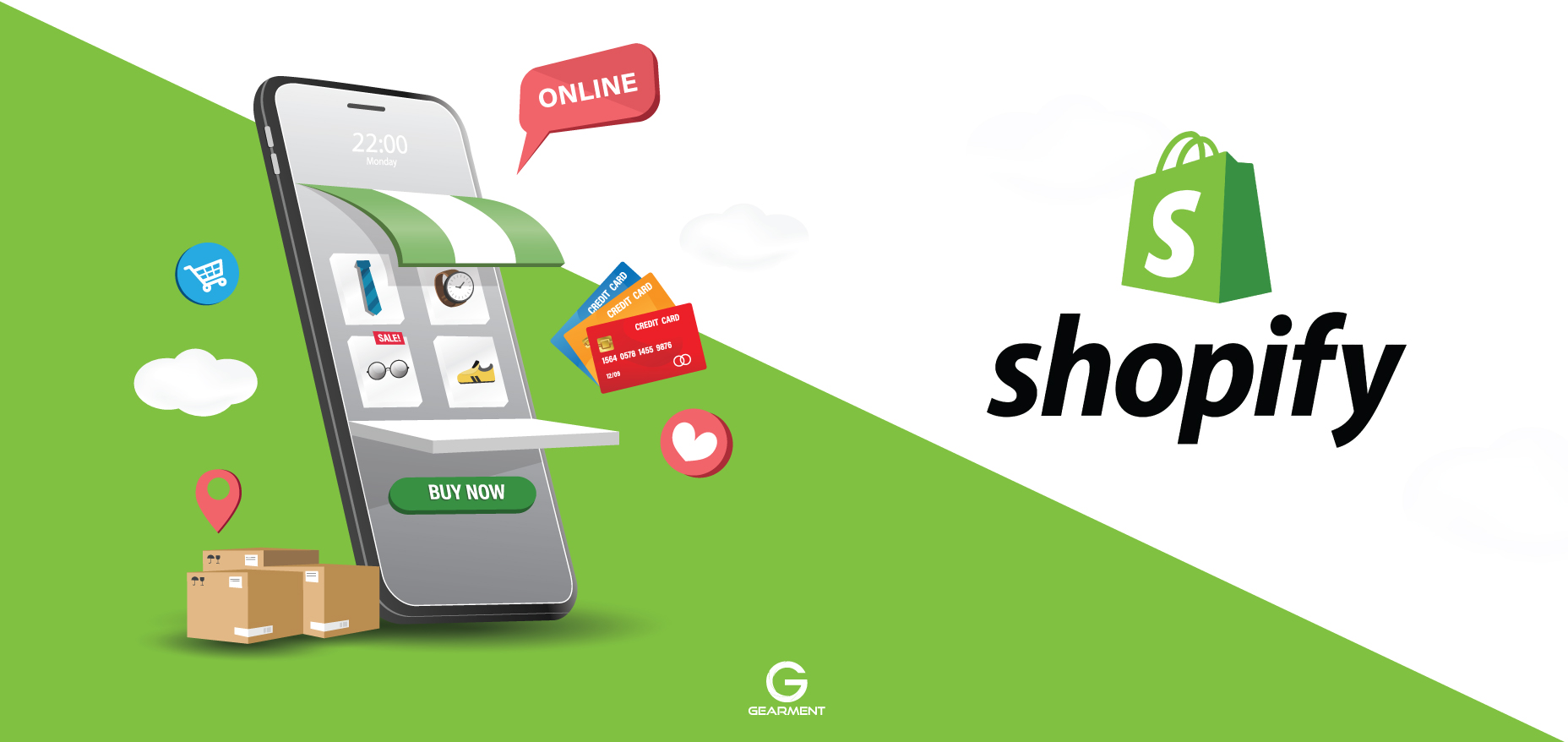
Shopify, a leading player in the e-commerce platform landscape, has carved out a reputation for its user-friendly interface and robust features. It’s an excellent choice for businesses of all sizes, from small startups to large enterprises, and is particularly favored by those looking to establish their first online store.
What is Shopify?
Shopify is a Canadian e-commerce company that offers a platform for businesses to create their own online stores and sell products. Since its inception in 2006, Shopify has grown exponentially, now hosting over a million businesses from approximately 175 countries. Its popularity stems from its ease of use, comprehensive features, and scalable solutions that cater to a wide range of e-commerce businesses.
The Pros of Shopify
User-Friendly Interface and Cost Efficiency
One of the standout strengths of Shopify is its user-centric simplicity. The platform is masterfully designed to facilitate ease of use, ensuring that even those without a technical background can effortlessly establish and manage their online storefront. From adding products and handling inventory to configuring payment gateways and orchestrating shipping details, Shopify streamlines the entire e-commerce process. This not only results in a swift time-to-live—often in just a few weeks at most—but also significant cost savings. By eliminating the need for extensive development, businesses can channel those saved funds into strategic marketing efforts. In essence, Shopify allows merchants to invest less in the intricacies of website creation and more into market expansion and growth, optimizing both time and financial resources for maximum business impact.
Comprehensive Features
Shopify comes packed with a wide range of features that cover all the bases of running an e-commerce business. This includes SEO tools to help your online store rank higher in search engine results, marketing tools to help you reach your target audience, and analytics tools to provide insights into your online sales and customer behavior.
Scalability
Shopify is a scalable, e-commerce platform that can grow with your business. As your online sales increase and your business expands, Shopify can handle the increased traffic and transactions. It offers different plans, each with its own set of features and capabilities, allowing you to upgrade as your business needs evolve.
Shopify+ (often referred to as Shopify Plus) stands as the pinnacle of the platform’s scalability efforts, designed specifically for enterprise-level businesses with significant online operations. Beyond just the capability to handle a high volume of transactions and traffic, Shopify Plus offers advanced features tailored for large-scale businesses. These include more customization options, dedicated support teams, additional API calls, and access to exclusive apps. Plus, with Shopify Plus, businesses can utilize automation tools and streamlined operations, which are imperative for managing multiple sales channels or expanding into international markets. In essence, Shopify Plus is Shopify’s commitment to ensuring that even as your business reaches new heights, the platform will be right there with you, ensuring seamless e-commerce operations.
Vibrant App Ecosystem
Shopify’s app store is another major draw for businesses. It offers thousands of apps that can extend the functionality of your online store. Whether you need to integrate with a third-party service, automate a routine task, or add a new feature to your store, there’s likely a Shopify app that can do the job.
The Cons of Shopify
While Shopify is a powerful platform, it’s not without its drawbacks.
Limited Customization
A significant limitation that many merchants face with Shopify is its restricted customization potential. Although Shopify offers a plethora of pre-designed templates, they often don’t provide the depth of modification that some businesses desire. Especially when it comes to the checkout experience, full customization is reserved for Shopify Plus users. While Shopify’s standard checkout is optimized for conversion (given that the company has tested and refined it for years), it may not align with the specific branding or functionality that a merchant wants. Those looking for a truly bespoke online store experience might find these restrictions a bit stifling, requiring them to delve into the nuances of Shopify’s proprietary coding language, Liquid, or consider upgrading to Shopify Plus.
Transaction Fees
Unless you opt for Shopify Payments, the platform’s native payment gateway, you will incur transaction fees for every sale. This is on top of the credit card processing fees levied by your chosen payment gateway. For businesses with a significant volume of online sales per month, these costs can quickly erode profit margins, making it essential to factor them into the overall financial calculations.
Example: Gymshark

Gymshark, a brand that’s synonymous with innovative athletic wear, has found an excellent match in Shopify. One of the primary strengths of Shopify is its ability to provide a smooth, responsive, and user-friendly experience. Given Gymshark’s target audience — fitness enthusiasts who appreciate efficiency and clarity — it’s vital that their online store reflects these same values. Shopify’s streamlined interface and optimized checkout process align perfectly with the brand’s ethos, ensuring that customers can quickly and easily find and purchase the workout gear they desire. Moreover, Gymshark’s rapid growth trajectory necessitates a platform that can scale seamlessly, and Shopify’s infrastructure ensures that the site performs optimally even during massive sales or product launches.
Conclusion
In conclusion, Shopify is a robust and user-friendly e-commerce platform that offers a comprehensive set of features. It’s an excellent choice for businesses of all sizes, particularly those looking to establish their first online store. However, its pricing and transaction fees can be a drawback for some businesses. As with any platform, it’s important to weigh the pros and cons and consider your specific business needs before making a decision.
Ready to take your e-commerce business to the next level?
Magento/Adobe Commerce: A Scalable E-commerce Solution
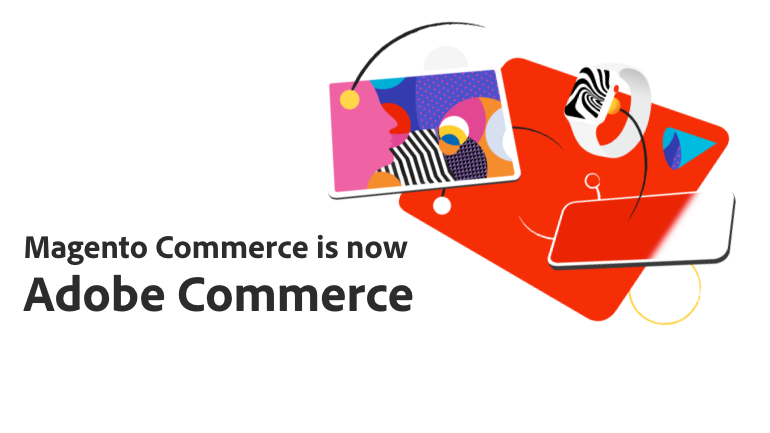
Magento, now also known as Adobe Commerce (which is its SaaS version), is a flexible and scalable e-commerce platform that’s a popular choice among mid to large enterprises and among B2B Small businesses.
What is Magento/Adobe Commerce?
Magento/Adobe Commerce is an e-commerce platform that offers companies a high degree of flexibility and control over the look, content, and functionality of an online store. It’s been a favorite among many businesses, particularly among B2Bs or among B2C looking to create unique experiences for their customers..
What’s the difference between Magento and Adobe Commerce?
Adobe acquired Magento in 2018. Adobe Commerce is the licensed version of Magento and comes with additional features and functionality out of the box, one that stands out is the integrated B2B functionality. However, it also comes with a higher price tag.
The Pros of Magento/Adobe Commerce
Scalability
Capable of managing extensive product inventories and high-volume transactions, it supports your growth journey, regardless of your current size. This scalability extends to multilanguage and multicurrency capabilities, making it a perfect fit for businesses with global aspirations. By addressing customer preferences in their language and currency, it can significantly enhance customer satisfaction, boost sales, and improve market penetration.
Customization
Magento/Adobe Commerce is an attractive platform due to its high degree of customization. It empowers businesses to design an e-commerce solution that perfectly aligns with their unique requirements, rather than adjusting operations to fit a SaaS template. This customization extends to features like checkout flow, advanced product search, and personalized content. These tailored functionalities can increase customer engagement, enhance user experience, and ultimately drive revenue growth
Third-Party Integrations
Magento/Adobe Commerce excels in its integration capabilities, providing tangible value to businesses. Its customizable REST and GraphQL APIs allow for seamless connections with essential systems such as CRM software, marketing tools, or payment processing gateways. These integrations not only streamline operations but also lead to improved data accuracy and efficiency. They broaden the platform’s inherent functionalities, enabling businesses to build personalized e-commerce solutions. This can drive growth, reduce operational costs, and ultimately enhance the bottom line, offering a compelling return on investment for businesses.
Large Community
Magento/Adobe Commerce’s yields a strategic edge for businesses. Its vast community offers invaluable resources, from extensions to guides, ensuring the platform stays current with e-commerce trends. This ecosystem mitigates vendor lock-in risks, granting businesses flexibility in choosing from thousands of support agencies, making it a reliable, future-proof option.
The Cons of Magento/Adobe Commerce
Despite its strengths, Magento/Adobe Commerce has its drawbacks.
Complexity
The main drawback of Magento/Adobe Commerce is its complexity. The platform requires a steep learning curve and requires well-experienced developers to work on. The development needs to be done by a specialized agency as well as the updates.
Cost
Launching Magento/Adobe Commerce might entail higher initial costs and a longer setup time compared to SaaS alternatives. However, it’s crucial for businesses to consider the longevity of this platform. The investment in Magento/Adobe Commerce significantly reduces the need for future re-platforming, leading to long-term savings and stability.
Hosting
While Magento/Adobe Commerce can handle large volumes of products and transactions, it requires a robust hosting environment to perform optimally. This means you may need to invest in high-quality managed hosting services.
Example: Landrover

Landrover’s decision to leverage Magento/Adobe Commerce for their online store showcases a strategic alignment between brand prestige and platform capability. Magento/Adobe Commerce is renowned for its high level of customization, scalability, and ability to handle complex product catalogs — all essential for a brand with the stature and intricacy of Landrover. The platform’s robust feature set ensures that visitors to the site experience the same level of sophistication and quality they’d expect from the Landrover brand. Additionally, Magento’s powerful integration capabilities mean that Landrover can synchronize their online shop with other systems, be it inventory, CRM, or ERP, providing a cohesive brand experience from end to end.
Conclusion
In conclusion, Magento/Adobe Commerce provides a highly customizable, scalable, and integrative e-commerce solution, making it a viable choice of e-commerce solution for mid to large-sized enterprises. Its complexity and initial cost, while substantial, are balanced by its long-term stability and the savings from avoiding future re-platforming. With the right expertise or partnership with a specialized agency, businesses can effectively leverage this robust platform. Despite the need for robust hosting, the superior performance it ensures is a worthy trade-off for any business aiming to provide an optimal shopping experience to its customers.
WooCommerce: A Flexible E-commerce Solution
WooCommerce is a free, open-source e-commerce platform built on WordPress. Known for its flexibility and extensive customization options, WooCommerce is a popular choice among businesses that already have a WordPress website and want to add e-commerce functionality.
What is WooCommerce?
WooCommerce is an e-commerce plugin for WordPress, the world’s most popular content management system. It allows you to turn your WordPress website into a fully functional online store with just a few clicks. Since its launch in 2011, WooCommerce has grown in popularity and is now used by a large number of online stores.
The Pros of WooCommerce
Flexibility
WooCommerce’s main advantage is its flexibility. As an open-source platform, WooCommerce allows for unlimited customization. Businesses can add a wide range of features and functionalities to their online store, from custom themes to selling features to unique payment options.
WordPress Integration
If you’re already using WordPress for your website, WooCommerce is a natural choice for your e-commerce platform. It integrates seamlessly with WordPress, allowing you to manage your website and online e-commerce store all from a single dashboard.
Large Plugin Ecosystem
Like WordPress, WooCommerce has a large ecosystem of plugins. These plugins can extend the functionality of your online store, adding features like advanced shipping options, product bundles, and more.
Cost-Effective
WooCommerce is free to use, making it a cost-effective choice for small businesses and startups. While there are costs associated with hosting, domain registration, and premium plugins, WooCommerce still tends to be a more affordable option compared to other e-commerce platforms.
The Cons of WooCommerce
Despite its advantages, WooCommerce has its drawbacks.
Complexity
While WooCommerce is relatively easy to use if you’re familiar with WordPress, it can be complex for those who aren’t. The platform offers extensive customization options, but these require a certain level of technical knowledge to use effectively.
Self-Hosted
As a self-hosted platform, businesses using WooCommerce are responsible for managing their own hosting, security, and updates. This can be a challenge for businesses without technical expertise and can increase the time and effort required to manage the online store.
Limited Support
While WooCommerce offers documentation and forums, it doesn’t provide direct customer support. If you run into issues, you’ll need to rely on community support or hire a developer to help you out.
Example: Daelmans Stroopwafels

Daelmans Stroopwafels, representing a niche yet beloved product, has made a wise choice in selecting WooCommerce for their online storefront. WooCommerce, built on WordPress, is well-suited for businesses that require a blend of content-rich storytelling alongside e-commerce capabilities. The platform is incredibly flexible, allowing Daelmans to craft a unique narrative around the heritage and quality of their stroopwafels. Additionally, WooCommerce’s vast array of plugins and extensions ensures that Daelmans can fine-tune their site’s functionality to match their specific needs, from unique product displays to specialized shipping options. It’s a platform that facilitates a deep connection between brand and consumer, making it an apt choice for a company with such a rich legacy.
Conclusion
In conclusion, WooCommerce is a flexible and cost-effective e-commerce platform that’s a great choice for businesses already using WordPress. Its flexibility and large plugin ecosystem make it a powerful tool for building a unique online store. However, its complexity and the responsibilities that come with being a self-hosted platform can be a challenge for some businesses. As with any e-commerce platform, it’s important to consider your specific business needs and capabilities when making your choice.
Choosing the Right E-commerce Platform for Your Business?
In the world of e-commerce, choosing the right platform is a critical decision that can shape the future of your online business. Shopify, Magento/Adobe Commerce, and WooCommerce each offer unique features and capabilities that can help drive your online sales and elevate your e-commerce business.
Shopify, with its user-friendly interface and comprehensive features, is an excellent choice for businesses of all sizes, particularly those looking to establish their first online store. Its ease of use and scalability make it a robust platform that can grow with your business. However, its pricing and transaction fees can be a drawback for some businesses.
Magento/Adobe Commerce, on the other hand, is a powerful and flexible e-commerce solution that’s well-suited to large businesses and enterprises. Its scalability, customization options, and extensive features make it a robust solution for large-scale e-commerce operations. However, its complexity and cost can be a barrier for smaller businesses or those without technical expertise.
WooCommerce is a flexible and cost-effective e-commerce platform that’s a great choice for businesses already using WordPress. Its flexibility and large plugin ecosystem make it a powerful tool for building a unique online store. However, its complexity and the responsibilities that come with being a self-hosted platform can be a challenge for some businesses.
In a nutshell: which e-commerce platform do you need?
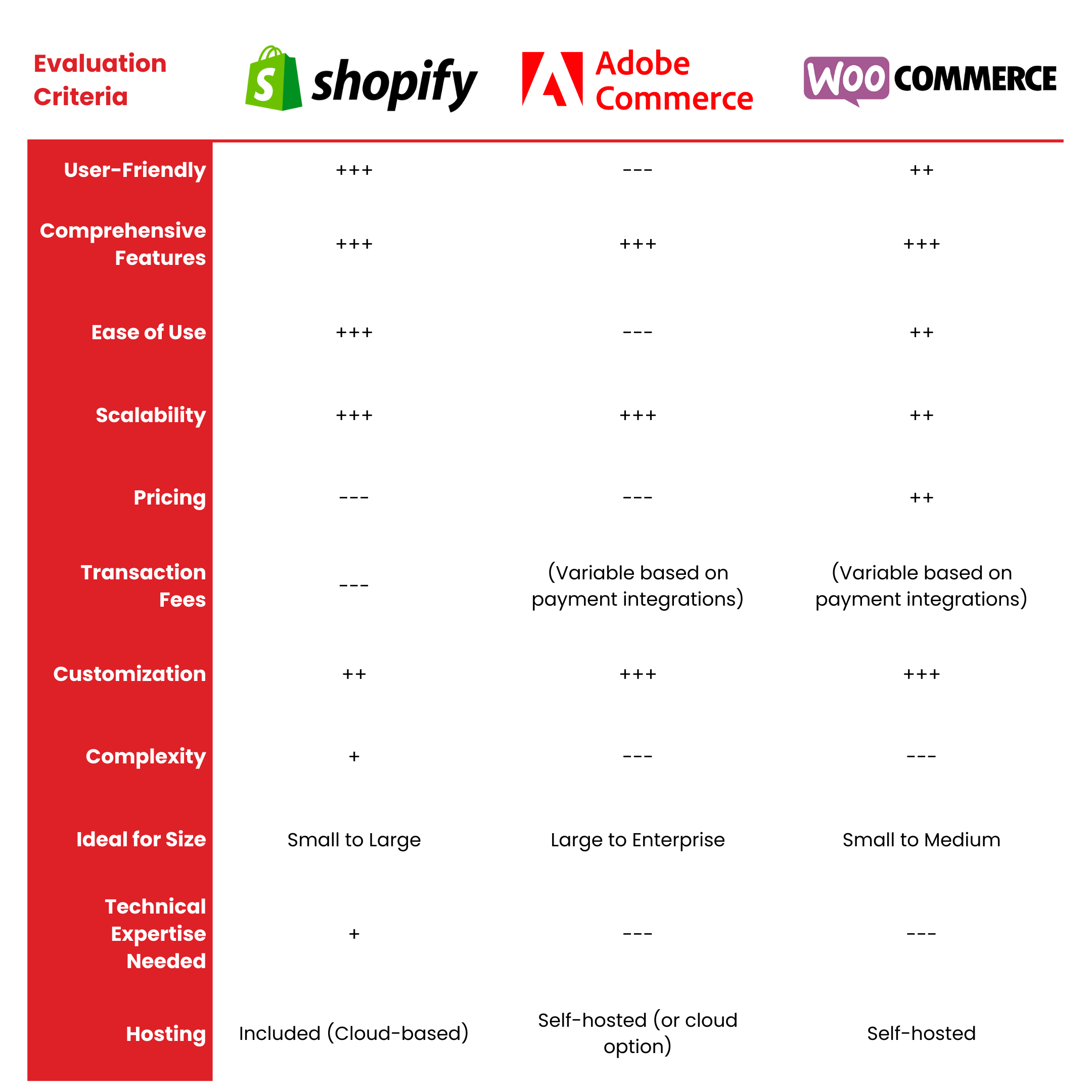
+++: This indicates that the platform excels remarkably in the given criteria. For instance, if “User-Friendly” has a ‘+++’ rating for a platform, it means the platform is extremely user-friendly and is one of its strongest attributes.
++: This shows that the platform performs well in the mentioned criteria but might have some limitations or areas where improvements could be made. A ‘++’ under “Ease of Use” would suggest that while the platform is easy to use, there could be certain aspects that might require a learning curve or additional resources.
+: This signifies that the platform offers a basic level of functionality or benefit in the particular criteria. For example, a ‘+’ in “Technical Expertise Needed” means the platform does require some technical know-how, but it’s relatively minimal.
—: This implies that the platform has significant challenges or drawbacks in the specific criteria. If “Complexity” has a ‘—‘ rating for a platform, it means that the platform is very complex to handle or navigate, potentially requiring external expertise or extensive training.
—: This denotes that the platform has clear challenges or limitations in the specific criteria. A ‘–‘ under “Pricing” could indicate that while the platform offers value, its pricing is relatively high or not fully transparent.
–: This indicates that the platform has some minor challenges or shortcomings in the given criteria. For example, a ‘-‘ in “Customization” suggests that while customization is possible, it might not be as extensive as some users might wish.
In the end, the best e-commerce platforms for your business depends on your specific needs, resources, and goals. It’s important to consider factors such as your technical expertise, budget, the size of your business, and your plans for growth. And keep in mind that an e-commerce platform is not the same as a website builder.
Remember, the success of your e-commerce business depends not only on the platform you choose but also on how well you understand your customers and their online shopping habits. So, keep exploring, keep learning, and keep growing your online e-commerce business.
Get started with your e-commerce business today!
Ready to take your e-commerce business to the next level? Our Digital Product Studio is ready to help you build a successful online store that drives sales and delivers a seamless shopping experience for your customers. We have extensive experience building e-commerce shops on various platforms, including Shopify, Magento/Adobe Commerce, and WooCommerce. Let us help you navigate the world of e-commerce and choose the platform that best suits your business needs.
Remember, the world of e-commerce is dynamic and constantly evolving. Stay informed, stay adaptable, and stay ahead of the curve. With the right platform and the right strategy, you can transform your e-commerce business into a thriving online store that stands out in the crowded online marketplace.
